

CANADA’S ‘LEADING WOMEN IN TURF’ PG8
Cruise control
Set speed with the touch of a button for optimized runtime

quiet
Low-noise operation ideal for noise-restricted environments
max. velocity
305 km/h
Featuring nearly double the power of the BGA 86
Compact ergonomic design
Highly maneuverable and built with operator comfort in mind


The most powerful battery handheld blower in the STIHL lineup is compact and capable of clearing wet debris and leaves.
The BGA 250 features a max velocity of 305 km/h and 26 Newtons of force, coming in at nearly twice the power of the BGA 86. The compact, lightweight design and ergonomic shape of the blower tube allows for comfortable operation. The BGA 250 features a convenient cruise control function, weather-resistant design and a reduced-noise operation, producing only 60dB(A). This powerhouse handheld blower is an excellent value for professionals and homeowners alike.




04 | From the editor Celebrating class of turf’s top women 30 | Health & Safety The ergonomics of winter maintenance
Introducing turf’s leading women of ‘25 This year’s honourees continue to pave the way for women in the industry

From
By Mike Jiggens
Celebrating new class of turf’s top women
It’s that time of year again when Turf & Rec celebrates the accomplishments of some of the most impactful women in the Canadian turf industry. As was the case last year, we are recognizing a group of four women considered to be among Canada’s “leading women in turf.”
A greater influx of women has entered the industry in recent years, and there appears to be no sign that this trend will discontinue anytime soon. What has always been a male-dominated industry is becoming one with a growing female population.
Turf & Rec opted to assign a panel of three judges the task of selecting this year’s honourees. Two of those judges were past recipients of the honour while the third has been a longtime ambassador for women contemplating a career in turf by acting as a mentor and a champion of the cause.
Interestingly, the latter was also nominated this year for the honour. It put her in a rather awkward position, and she chose not to cast a vote for herself. Her fellow judges, however, recognized the fact she was a worthy candidate and gave her a high enough score for her to be included among this year’s class of leading women in turf.
We thank our panel of judges – Dr. Sara Stricker of the Guelph Turfgrass Institute, Karen Rumohr of Shuttle 14 and Morgan Creighton, founder of a mentorship program aimed to ease women’s entry into the turfgrass world – and we congratulate this year’s selected honourees –Creighton; Dr. Nancy Xiao, head of Ferti Technologies’ research and development division; Tammy Bougard, assistant superintendent at Quebec’s le Club Laval-sur-le-Lac; and Natalie Russell, former assistant superintendent at Country Hills Golf Club in Calgary.
Career in turf was never the initial choice among several of these recipients
A trend has emerged among many of the “leading women in turf” honourees over the past few years, and this year is no exception. A career in turf was never the initial choice among several of these recipients, including two of this year’s honourees. Both had their sights set on teaching school, but upon getting a taste of the industry through summer work and already having a love of the outdoors, their career paths changed.
Creighton’s story featured
prominently two years ago in the pages of Turf & Rec, and her influence on other women in the industry has been profound. Dozens of women have looked up to her over the years for advice and mentorship as they’ve entered the industry. Her influence has helped these women gain the peace of mind they seek as they begin what is apt to be a long and rewarding career.
In a bit of a role reversal, many men are benefiting from the influence of women in the turf industry. One of this year’s honourees – Dr. Xiao – is doing work that has directly helped golf course superintendents, whether they are male or female. In fact, she recently presented an online webinar via Turf & Rec on the topic of optimizing turfgrass growth and sustainability through smart fertilizer strategies.
Our other honourees – Bougard and Russell – have left their mark in the golf sector of the industry. Russell is currently a “free agent” and is looking to get back into the fold after moving on from Country Hills late last fall. Bougard stepped away from the golf industry for several years to raise a family but missed the allure of the golf course which led to her return 15 years later.
Turn to page 8 of this issue to read how each of our 2025 honourees got into the turf industry, what they’re enjoying most about it and what advice they have for other women who may be contemplating a future in the industry.
www.turfandrec.com
Reader Service
Print and digital subscription inquiries or changes, please contact Angelita Potal, Customer Service Tel: 416-510-5113 apotal@annexbusinessmedia.com
Mail: 111 Gordon Baker Rd., Suite 400 Toronto, ON M2H 3R1
Editor Mike Jiggens mjiggens@annexbusinessmedia.com
Advertising Manager Rebecca Lewis 519-400-0322 rlewis@annexbusinessmedia.com
Account Coordinator Trish Ramsay 416-510-6760 tramsay@annexbusinessmedia.com
Audience Development Manager
Anita Madden 416-510-5183 amadden@annexbusinessmedia.com
Group Publisher Anne Beswick 416-410-5248 abeswick@annexbusinessmedia.com
CEO Scott Jamieson sjamieson@annexbusinessmedia.com
Printed in Canada ISSN 1186-0170
PUBLICATION MAIL AGREEMENT #40065710
SUBSCRIPTION RATES
Published 7 times a year – Jan/Feb, March, Apr/May, June/July, Aug/Sept, October, Nov/Dec Canada – 1 year $35.70 CDN; 2 year $45.90 CDN; 3 years $56.61 CDN (plus applicable taxes; single-copy$7.00 CDN USA – 1 year $48.96 CDN HST 86717 2652 RT0001
Occasionally, Turf and Recreation will mail information on behalf of industry related groups whose products and services we believe may be of interest to you. If you prefer not to receive this information, please contact our circulation department in any of the four ways listed above.
Annex Privacy Office privacy@annexbusinessmedia.com Tel: 800.668.2374
No part of the editorial content of this publication may be reprinted without the publisher’s written permission © 2025 Annex Business Media. All rights reserved. Opinions expressed in this magazine are not necessarily those of the editor or the publisher. No liability is assumed for errors or omissions.
All advertising is subject to the publisher’s approval. Such approval does not imply any endorsement of the products or services advertised. Publisher reserves the right to refuse advertising that does not meet the standards of the publication.








Your Trusted Source for Top Turf Brands in Canada






Chris Nelson
T&O Sales Manager, East Canada chris.nelson@target-specialty.com
647.382.6868
Paul Powers
Toronto West / Niagara paul.powers@target-specialty.com 289.209.1869
Perry Brazeau
Toronto / East perry.brazeau@target-specialty.com 416.705.8006
Jason MacRae
Quebec North & West
jason. macrae@target-specialty.com
514.712.8006
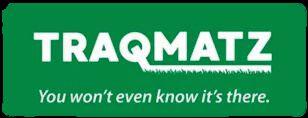
Joey Losito
Quebec South & East joseph.losito@target-specialty.com 819.571.1677
Colin Hindle
Ottawa & Eastern Ontario colin.hindle@target-specialty.com 613.314.9711
Mark Obee
Northern Ontario
mark.obee@target-specialty.com 705.444.9010
Kyle Johnston
South-West Ontario
kyle.johnston@target-specialty.com 905.351.6544


Josh Seibel
T&O Sales Manager, Western Canada josh.seibel@target-specialty.com 306.861.8296
Daren Collins
Mainland British Columbia daren.collins@target-specialty.com 403.559.8472
Gregor Kowalski
Vancouver Island
gregor.kowalski@target-specialty.com 250.686.3909
Dwayne Simpson
Northern Alberta dwayne.simpson@target-specialty.com 403.391.1984

Mitch Davidson
Southern Alberta, Kootenays mitch.davidson@target-specialty.com 587.223.2083
Chris Paterson
Southern Alberta & Kootenays chris.paterson@target-specialty.com 403.540.0157
Chad Fauchoux
Saskatchewan & Manitoba chad.fauchoux@target-specialty.com 306.551.2041
Former Abbey super co-purchases renamed Wingham Golf Club
Former Glen Abbey Golf Club superintendent Scott Bowman has joined a silent partner in the purchase of the Wingham Golf & Curling Club in North Huron, Ont.
Bowman is co-owner of the South Port Golf Club near Port Elgin. The Wingham club, a not-for-profit, board-run facility, ceased operations last October. Under its new ownership, the nine-hole golf course will be renamed the Maitland Links Golf Club.
Possible road salt shortage could face snow contractors
A road salt shortage may present a challenge to business and residential snow removal customers in Ontario as snow storms continue to move across the province.
Landscape Ontario is warning about road salt supply challenges, noting supplies earmarked for municipal winter road maintenance are given higher priority.
The current shortage is being addressed as a “two-week pause” without a timeline provided for supply levels to return to normal.
Sudbury to clarify between naturalized and neglected yards
City councillors in Sudbury are seeking more clarity in the city’s yard maintenance bylaws that will better distinguish naturalized properties from those that are neglected.
The Greater Sudbury Food Policy Council has fielded complaints from residents whose properties were visited by bylaw officers after they had grown wildflowers and native plants.
A pair of councillors have prepared a motion that would provide more clarity to residents.
Cordova Bay equipment tech named ‘technician of the year’
Bev Lichty, head equipment technician at the Cordova Bay Golf Course in Victoria, B.C. has been named the CGSA/Prairie Turf Equipment “equipment technician-of-the-year” award winner for 2024.
Number of holes at newly named Maitland Links Golf Club
The award, co-sponsored by the Canadian Golf Superintendents Association and Prairie Turf Equipment, is presented annually to the technician whose nomination is judged to be the best example of an individual who exhibits professionalism, innovation, and a team approach to make a significant contribution to their golf facility and the golf community.
As the winner of this award, Lichty will receive an “all-access” registration to the Canadian 2025 Golf Course Management Conference (CGCMC) in Niagara Falls Feb. 25-27, 2025. He will also receive four nights’ accommodation at the Hilton Fallsview Hotel & Suites in Niagara Falls as well as transportation to the conference location.

possesses is his innovative intellect and his ability to take an idea and fabricate a variety of tools and equipment to help us with our daily maintenance tasks. If there is something that should be easier to do, Bev will come up with an idea and make it a reality.”
CGSA president John McLinden said Lichty “is known for being calm, hardworking and incredibly kind and helpful. His positive influence on the maintenance department has taken the facility to the next level.”
20 cm:
Maximum height of vegetation allowed under current bylaw
Dean Piller, superintendent of the Cordova Bay Golf Course, who nominated Lichty, said, “Bev Lichty has all the qualities and skill sets that make him an outstanding equipment technician, and his value to our operation goes well beyond keeping the equipment in excellent condition. A unique skill that Bev
Cory Froehlich, managing partner at Prairie Turf Equipment, said every success golf course relies on the expertise of a skilled equipment technician.
“There is no doubt that Bev deserves this accolade, and we are immensely proud to support his accomplishments,” he said.
Prairie Turf Equipment is the exclusive sponsor of the award.
Kubota Canada marks milestone

Kubota Canada Ltd. is celebrating its 50th year in Canada in 2025. “We are exceptionally proud of our half century of continued growth in Canada,”
Yannick Montagano, president of Kubota Canada, said. “When we launched in Canada 50 years ago, our goal was to sell compact agricultural tractors to Canadians. Since then, we have significantly expanded our award-winning product line-up to meet the evolving needs of a broad range of markets and individuals. We launched the first-ever heavy equipment cold weather testing facility in Timmins, Ont., in 2013, which is now the global gold standard for Kubota, ensuring our machinery consistently lives up to real-life conditions.”
The demand for Kubota products and the associated company growth led to an investment exceeding $80 million in a new, state-of-the-art 65,000-square-foot corporate office and 500,000-square-foot warehouse in Pickering, Ont., in 2022. Today, the company directly, and by extension, employs more than 1,500 Canadians, reflecting Kubota’s sustained growth since 1975.
According to the North American Equipment Dealers Association’s 2024 Dealer-Manufacturer Relations survey, Kubota Canada is ranked as the No. 1 full line OEM with dealers when it comes to overall satisfaction, product and parts quality, parts availability, product support, warranty, communication with management and manufacturer responses to needs and concerns.
Earlier this month, Kubota Canada introduced three new additions to its compact construction lineup, with a pipeline of new products set to be announced throughout the coming year. Given the significance of the Canadian market, Kubota Canada plays a role in the company’s global product development cycle, ensuring products are designed to meet the unique needs of its customers. Montagano further remarked, “We became industry leaders by listening to our customers, addressing their needs, and continuously looking towards the future. Fifty years of equipment manufacturing progress with an unwavering commitment to our dealers and the customers they serve, is what makes Kubota Canada one of the most respected equipment companies globally today. We prioritize quality and excellence every day so that our customers can focus on feeding and building our world. I am immensely proud of the work that we do here in Canada, and Kubota looks forward to working with a new generation of Canadian customers and businesses for the next 50 years and beyond.”
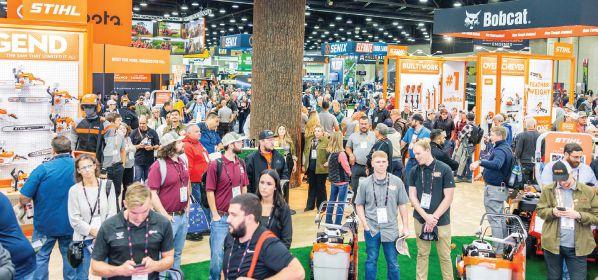
Hotel rooms expected to fill fast for fall’s Equip Expo in Louisville
Housing blocks have opened for industry members wishing to attend the 2025 Equip Expo show in Louisville, Ky. Louisville Tourism is the official housing provider.
Equip Expo will be held Oct. 21-24 in the Derby City, bringing thousands of landscapers, dealers, contractors, hardscape experts, and outdoor power equipment manufacturers to see the latest equipment and learn from the most innovative and successful in their industry. Last year the show, which will again be held at the Kentucky Exposition Center, broke attendance records, attracting more than 28,500 registrants.
“Hotel rooms fill up fast, so you’ll want to book where you’ll stay now,” advises Kris Kiser, president of the Outdoor Power Equipment Institute which owns and manages the trade show.
“Every year our attendance numbers go up, because every year, this show gets better. Last year we broke a new attendance record and booked over 32,000 hotel rooms. We sell out the city, so don’t wait – reserve your room today.”
Kiser added Equip Expo is the top industry event for companies of all sizes to test-drive the technology they need to grow.
“Our show provides one place
where they can try out the latest software solutions, robotic and autonomous equipment, and be among the first to see products that have just been launched,” he said. “Every year, we deliver great networking opportunities, professional education, the latest equipment in the business, and world class entertainment. But we’re always seeking to improve our offerings. In 2025, we are expanding and relocating the UTV Test Track, which has the additional benefit of freeing up more space in the Outdoor Demo Yard where our attendees put equipment through their paces.”
Registration for Equip 2025 is open and winter pricing for attendee registration is $25 through May 31, 2025. Hardscape North America continues to co-locate with the show. The blockbuster trade show brings more than $25 million annually to Louisville.
Since assuming management of the business-to-business trade show in 2022, OPEI has worked to energize Equip Exposition’s offerings. The show broke attendance records in 2022 with 25,000 attendees, in 2023 with 27,000, and again in 2024 with 28,500. Visit www.equipexposition.com to register and for more details.
INTRODUCING TURF ’ S LEADING WOMEN OF ‘ 25
This year’s honourees continue to pave the way for women in the industry
By Mike Jiggens
Four outstanding women who have left their mark in the Canadian turfgrass industry have been honoured as this year’s elite group of “Leading Women in Turf.” Three of this quartet of honourees have made names for themselves in the golf industry while the fourth heads up the research and development arm at a leading producer of fertilizers and amendments.
Turf & Rec is pleased to announce those who our judges selected as Canada’s leading women in turf: Dr. Miyuan (Nancy) Xiao, head of Ferti Technologies Inc.’s Ferti Innovation in St-Michel, Que.; Tammy Bougard, assistant superintendent at Club de Golf Laval sur-le-Lac in Laval, Que.; Morgan Creighton, founder of an Edmonton-based mentorship program aimed at helping women navigate their way into the turf industry; and Natalie Russell, former assistant superintendent at Country Hills Golf Club in Calgary.
The panel of judges tasked with selecting these women – two of whom are past honourees – were Dr. Sara Stricker, communications and outreach co-ordinator at the Guelph Turfgrass Institute; Karen Rumohr,
former superintendent at Woodside Golf Course in Airdrie, Alta. and currently plant nutrition specialist at Shuttle 14 in Edmonton; and Creighton, who opted not to vote for herself despite being nominated.
Here are the background stories of Turf & Rec’s Leading Women in Turf honourees for 2025.
Dr. Nancy Xiao
While still in high school in her native China, Dr. Miyuan Xiao developed an interest in biology which led to her post-secondary studies there. Learning about a co-op program in turfgrass management linking the university she attended in China with Michigan State University (MSU), it led to
a move to North America which would become permanent.
She met her husband – a PhD at Guelph – at an agricultural conference during her studies at Michigan State. They married and started a family in Canada where they have since remained.
Xiao, who has adopted the English name “Nancy,” earned her master’s degree at MSU and later became a PhD studying at the University of Guelph.
“My experience in the turf industry has been quite straightforward so far,” she said, adding she began working at Ferti Technologies before completing her studies at Guelph.
Xiao’s primary focus was in turfgrass management in the golf sector which factored into her decision not to return to China. There are few golf courses in her native country, and her level of education lent itself to working in North America where golf is much more popular and where golf courses are more abundant.
“When I chose to continue in this career, I pretty much chose to continue an educa-

tion career in North America. It’s worked out pretty good for me.”
Xiao is currently the head of Ferti Innovation, the research and development arm at Ferti Technologies Inc. in St-Michel, Que.
Having helped establish the division within the company, she currently leads a team that includes agronomists, technical support specialists and lab assistants who foster

collaboration and deliver solutions. Ferti Innovation has transformed ideas into actionable strategies, and she has spearheaded product development through laboratory trials, efficacy analysis, field trials, pilot trials with customers and collaborative research trials with universities.
“A lot of products we’re bringing out are sustainable products from recycled sources and organic sources. I’m pretty proud that we established a division for the company and are upholding the division and mission for the product development and innovation.”
She describes her position with Ferti Technologies as “a dream come true,” fulfilling her ambition to serve as a bridge between research and industry where she can bring new technologies into the market and still make close connections with research institutions and universities.
Xiao is a proponent for promoting opportunities for women in the turfgrass industry. She annually participates in the women-ingolf session at the Golf Industry Show, discussing challenges faced by women and
How Does Pond Dye Work?






Aquatic plants, just like plants on land, need light to grow. In ponds we address light penetration into the water by adding pond dye. Pond dye essentially creates a higher re ective surface on your pond so that less light reaches the bottom, where plants start to grow every spring. It works best at depths greater than six feet and will not be as e ective in the shallow areas around the edges of your pond. Pond dyes work on the premise that plants grow poorly without light so blocking it will reduce your growth in the main body of the pond. Pond dyes are available in blue, which you commonly see at golf courses, and black, which give a more natural Muskoka water look. Pond dyes are most e ective if added early in the spring as soon as the ice is o the pond and before growth starts. They are non-toxic and are safe for humans, pets and wildlife alike.


To decrease plant growth in ponds you could also explore nutrient management straties by using probiotics and manual removal. We discuss these topics and more in our FREE Pond Resource Guide. It is lled with years of experience helping our customers and will help you understand the problems you are experiencing and why they happen. Please contact us if you would like one sent out or you can drop by our store to pick one up and discuss the challanges you are having. Your





Dr. Nancy Xiao
providing appropriate solutions.
She said women entering the industry are apt to feel different because it’s so male-dominated, but she added there’s no need to be afraid about being different.
“With confidence and capability, it actually makes us stand out more easily, combined with the difference we have. If we’re not seen as role models in the industry, it’s hard for them to envision a future in this industry. If more women can be seen and their stories can be told, that will encourage or inspire young women to get into the industry.”
Xiao credited several individuals who served as mentors to her in her journey through the industry, noting Dr. Kevin Frank at MSU, Dr. Eric Lyons at the University of Guelph and Ken McLeod and Martin Bisaillon of Ferti Technologies.
As she looks ahead to the future, Xiao has a couple of ambitions she hopes to fulfill. One is to establish a sustainability framework at Ferti Technologies while the other is to bring the Golf Course Superintendents Association of America’s First Green program to Quebec. The STEAM (science, technology, engineering, arts and mathematics) environmental outreach program that uses golf courses as living laboratories has a presence in Ontario but nowhere else in Canada. She’s working with the superintendents association in Quebec to bring the program to the province.
When she’s not directly involved with industry matters, Xiao has helped new immigrants integrate into Canadian society by volunteering as an English-Chinese translator with the Immigrant Services of Guelph-Wellington and serving as an accredited English-Chinese court interpreter for the Ministry of the Attorney General.
Morgan Creighton
As one of the judges responsible for selecting this year’s four “Leading Women in Turf” honourees, Morgan Creighton opted to not vote for herself. Her fellow judges, however, recognized the contributions she has made over the years toward helping other women ease their way into the indus-

try that their votes tipped the balance, enabling Creighton to join the elite group.
“It’s fantastic, but it does feel weird because I am one of the judges,” she said. “It’s an honour. I enjoy helping people in this industry and making everyone feel welcome and that they belong. To know that other people out there recognize what I’m doing is really something I can’t put words to. It feels amazing.”
Currently inactive in golf course management, Creighton was an assistant superintendent at Woodside Golf Course in Airdrie, Alta. but is perhaps better known as the founder of a mentorship program designed for women wishing to pursue a career in turfgrass management. Those who have benefited from the program have praised Creighton for making a positive difference in their journeys.
Although she’s currently looking to re-enter the golf sector, she says the mentorship program is keeping her busy along with some public speaking engagements that
included a recent address at Old College’s career fair day about diversity, equity and inclusion.
Creighton noted this is the first winter since her college days 10 years ago that she’s had time off for herself. Even though she’s seeking a return to the industry, she’s enjoyed the additional time she’s spent with family and has recently become a new aunt.
She attended the Golf Industry Show in February in San Diego as part of the Golf Course Superintendents Association of America’s “EXCEL Leadership Program” which offers leadership training for personal, career, and community/industry stewardship for assistant superintendents.
In her quest to return to golf, Creighton said she wants to find a place where she feels like she’s growing and is comfortable and that its leadership is in keeping with how she would like to lead a team.
“If you don’t have a strong leadership group, you’re not going to have a strong team below you.”
She acknowledged there are personal aspects she needs to work on for her own growth, citing budgeting as one area where she has little experience. Ultimately, she wants her next place of employment to be one where she feels happy, healthy and safe.
A career in golf wasn’t on Creighton’s radar in the beginning. She had her sights set on teaching school but caught the bug for outdoor work while working days at a golf course and taking classes at night.
“As much as I enjoyed the aspects of teaching, I really didn’t want to be inside all day.”
An assistant superintendent at the course where she was working recommended Old College as a preferred place to learn turfgrass management. The suggestion got her thinking that perhaps there was another
“If you don’t have a strong leadership group, you’re not going to have a strong team below you.”
Morgan Creighton
career option she could consider besides teaching. Enrolling at Olds solidified her new career path.
“It showed me the side of the industry of not just being on a golf course, but where we’re all there to support each other and build each other up. It’s such an amazing industry.”
Over the years, Creighton says what has brought her the most pride has been seeing how far she’s been able to push herself and what she’s been able to do.
“I’m a big introvert and someone who lacks self-confidence. To see my skill set grow and to be able to have something that I wasn’t confident in before but now has become second nature, it helps me learn about who I am and exactly what I can do.”
Women contemplating a career in turf need to utilize their time and put in the effort, she said.
“I truly believe that if there’s anything you want to do, it takes effort and commitment on your part. It’s not always easy. There’s going to be hard days. There’s going to be places that you’ll work at where you don’t necessarily work well with the other people and the management group, and that’s OK. To take the time to find out what’s best for you is imperative.”
One of the things Creighton stresses during her speaking engagements is the need to understand one’s unconscious biases and to be able to work toward minimizing them.
“If you have these biases that you’re unaware of, they’re going to directly affect you and how you lead people and how you hire people and how those people can move up within the company.”
Although she’s been a mentor to many, Creighton cites former Woodside Golf Course superintendent Karen Rumohr as perhaps her most influential mentor.
“She has taught me so much and continually builds me up and is such a big person in my life.”
Tammy Bougard
Tammy Bougard, assistant superintendent at Quebec’s le Club Laval-sur-le-Lac, has

experienced two separate entries into the professional turf industry. The first was a summer job at a local golf course in the early 1990s which triggered her interest in turf management. The second came much later when, after stepping away from golf for several years to raise a family, she returned to resume her chosen career.
When she first began working at a golf course, Bougard said there were few women working in the industry. In fact, she was the lone female student in her turfgrass management class at the University of Guelph. But, upon re-entering the industry following her family rearing hiatus, she found things had changed with significantly more women working in golf and turf.
She says it’s still not easy for women entering the industry, and she sometimes wonders if much has really changed since she first started.
“It definitely takes longer to get their (men’s) credibility,” she said. “It’s not an instant thing with guys when they’re dealing with women. It takes a little longer to get their respect. That’s not changed.”
Bougard said she suspects some of that might be age-related, noting young males entering the industry see her as a person and not specifically as a woman. The same is true among retirees who work seasonally at golf courses. The 55 to 65 years age group, however, is the toughest one to crack and
the one that takes the longest to earn a woman’s respect, she said.
Her first pre-college experience working at a golf course gave her an idea of what a woman in the industry could accomplish with the right drive. She worked for a female superintendent, Lynne Swall, at a time when female superintendents were few and far between. But, after finishing college and getting back onto a different golf course, she found many of the tasks she was assigned were menial or involved gardening – duties that were often stereotypically assigned to women.
After getting her feet wet during her initial golf course run, she moved on to the Royal Montreal Golf Club, working for superintendent Blake McMaster who was more progressive and accepting, treating Bougard as an equal to the rest of his staff. She was given tasks that were more varied and enabled her to grow in experience.
Returning to golf for a second time following her self-imposed layoff, she said she wasn’t sure if she wanted to return as an assistant superintendent, noting it was a demanding job. She took a deep breath and decided to give the position a try, “and I instantly loved it.”
Bougard applauds women who have risen to the ranks of golf superintendents or assistants.
“They’ve made something really good with all of the women-in-turf programs they’ve started or support systems they have. It’s going to be easier now for new ones coming in. It’s a fabulous job outside. I love it or else I wouldn’t have stayed in it.”
She said she wishes there were resources available for girls in high school so that they could learn more about careers in turf.
“A lot of them don’t even know that this job exists unless they’re a golfer.”
Bougard said she often wonders what it would have been like had she remained in the industry and not left it for a spell to raise her children. She realizes, however, there was “no way” she could have simultaneously raised a family and worked full time.
During her 15 years of being home to raise her children, she remained connected to
Tammy Bougard
the industry through her husband, Pat Moir, who was a superintendent for 24 years.
“It made my transition back in a whole lot easier,” she said, adding her current superior at le Club Laval-sur-le-Lac has given her “such a fabulous opportunity” and is supportive of things she’d like to try.
She said she’s content with her current role and isn’t keen to become a superintendent at this stage of her life. “I’m very, very happy with the position I’m in.”
Becoming more involved with womenin-turf programs and doing her part to make the industry more approachable for women is something she aspires to accomplish.
Natalie Russell
Although she recently made the decision to move on from Country Hills Golf Club in Calgary, Natalie Russell accomplished a great deal during her eight years at the 36-hole facility. She began as a labourer and worked her way up to bunker foreman, spray technician and finally assistant superintendent.
Her introduction to the turf world came while studying English in university for a potential career as a teacher. She landed a summer job at Country Hills, figuring the chance to work outdoors would be a refreshing change from past summer jobs she previously had in retail and fast food. It didn’t take long for her to discover a career in golf course maintenance was her calling.
“I got to the point where I couldn’t see myself doing anything else,” she said. “I enjoyed being outside so much and I really liked the people I was working with.”
It was during Russell’s third season at Country Hills when she decided to transfer her bachelor’s degree to sport and recreation management. Upon completing that, she attended the University of Guelph’s online turf school.
“That helped send me on the path that I ended up taking at Country Hills.”
Before moving on from Country Hills in the fall of 2024 to pursue other opportunities, she looked after the club’s health and

safety department and spearheaded the golf course’s Audubon re-certification process. Additionally, she has gone from being a mentee in the Canadian Women in Turfgrass Management Mentor Program to becoming a mentor to others.
Her industry accomplishments include volunteering at the 2023 Women’s Open at Pebble Beach and at the Augusta National Women’s Amateur.
“I’ve really enjoyed going to other golf courses and meeting people and seeing new properties and learning new processes, and working in that high-stress environment is really exciting for me.”
Russell spoke about her volunteer experiences at the Alberta Golf Superintendents Association conference in 2023.
She said she feels fortunate to have had a good support team during her years at Country Hills, noting her superiors pushed her and helped her grow. She lamented that because her formal training in turfgrass management was done online, she missed out on some of the practical hands-on aspects that others enjoy while pursuing in-person studies.
A younger sister has since followed in Russell’s footsteps, having worked with her older sibling for a summer at Country Hills. Her educational path was through Olds College.
Russell has advice for other young women
“I got to the point where I couldn’t see myself doing anything else,”
who might be interested in a career in the turf industry.
“Don’t be deterred by the fact that it’s a male-dominated industry,” she said, adding it’s not much different from other types of jobs. “I haven’t found a good enough reason to stop what it is I’m doing.”
Russell said those entering the industry will get to work with different people wherever they go, “and working with people different from you in our industry is not a deterrent by any means. It’s an opportunity to meet new people, learn from them and grow alongside them.”
The industry can help itself become more welcoming to women through a simple change in mindset, she said.
“I think the No. 1 thing that people can do is be blind to the name on a resume. If you’re an assistant or a superintendent who is looking to bring people onto your crew, don’t let the fact that someone is a woman give you a second thought about it. Every woman who is applying to be in this industry can be just as capable as a man who’s applying for the same position. I think that sometimes the physical nature of the job or maybe a past hire might give people pause about hiring a woman for that position. But I think we have proven ourselves that we are well established in this industry and that we can do the hard work, too.”
Russell said that wherever she goes to begin the next chapter in her life that she can continue to work with good people and development healthy relationships.
“Every year I want to learn a little bit more and get a little bit better. I want to be able to be a stepping stone for other young women on their path now.”
Natalie Russell
MARCH 17TH – 23RD
British Columbia
APRIL 21ST – 27TH
Ontario
Alberta, Manitoba, The Maritimes, Newfoundland, Quebec & Saskatchewan MAY 5TH – 11TH


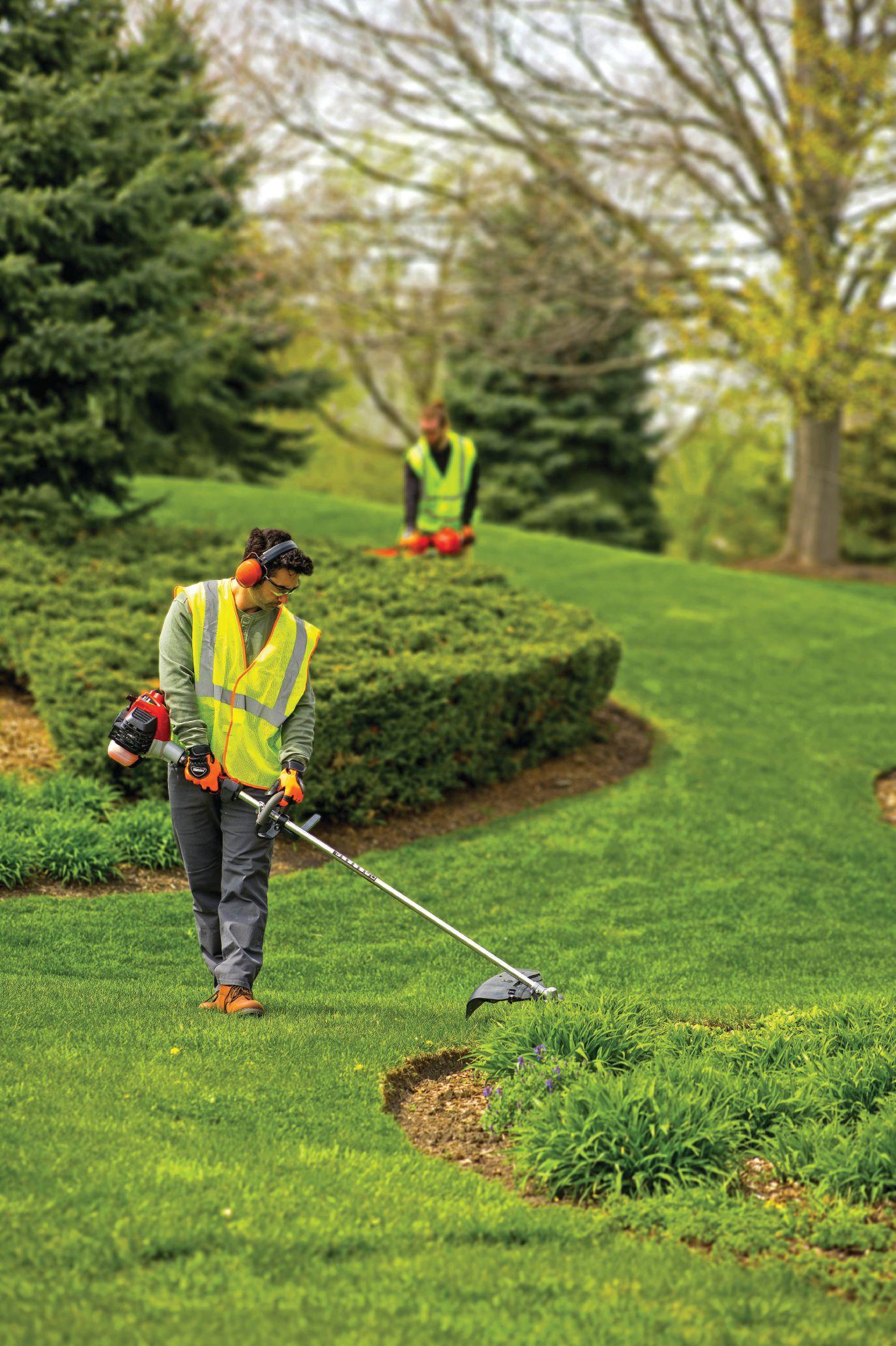




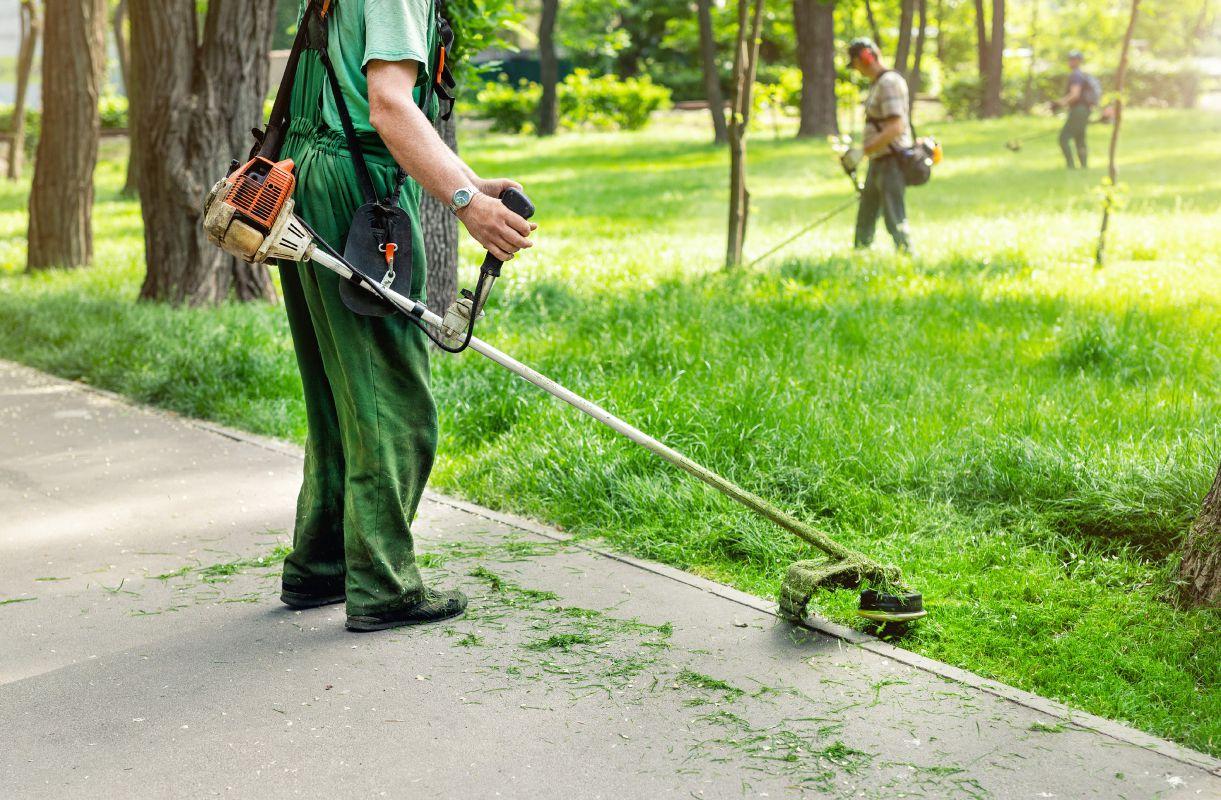
Technology helps to build better staff
Professionals have advice for hiring top landscaping employees. By Mike Jiggens
Lawn care company officials have found that using technology can help build a better workforce. They shared their ideas with those attending the summer’s Lawn & Landscape Technology Conference in Las Vegas, noting there are challenges to overcome with labourers from different generations as well as the nature of the job.
Alec McClennan, founder of Ohio-based Good Nature Organic Lawn Care, said not everyone is cut out to work in extremes of climate. His company’s onboarding process involved “babying” new hires along. He said if they proved themselves in the field, they’d come back for more training.
“Another challenge we find, even with good people, is that come July people are getting a little burned out, so we do a lot to try to combat that,” he said. “I’m thinking about what’s in it for my business. They’re thinking about what’s in it for them. How
can we think about it in terms of what’s in it for the team member? We try to treat them like internal clients.”
McClennan said many workers from the younger generation tend to be on their phones all day and lack human connection. At Good Nature, workers are broken up into small groups who meet monthly and must answer a series of questions. The groups become a comfort zone “family” for the workers. Employees at Good Nature are cared about as people and not simply those who generate so many dollars’ worth of production.
Gil Gratton, president and CEO of Virginia Green, a lawn care company with 11 locations in Virginia and another in Maryland, said his business operates a five-tosix-week training program during which employees are evaluated for such things as time spent on their phones and whether they’re interested in what the company is doing or learning more about some of the
materials used.
“You can tell fairly early on whether somebody’s going to make it or not,” Gratton said. “Once we get somebody for six months, then we feel they’ll stay on for three to four years.”
Virginia Green’s season spans the entire year, and employees work 6 a.m. to 12:30 p.m. so that they can beat the heat – a perk they appreciate.
“It’s always hard to get them (employees), but once we get them, if they make it through those first six months they’re generally on board,” Gratton said.
Creating career paths
He added Virginia Green likes to create career paths for its employees from the start, letting them know there are other opportunities they can pursue besides treating lawns. Employees undergo background tests before they’re hired.
Both McClennan and Gratton use soft-
Good landscaping employees can be hired by tapping into available technology.
‘You can tell fairly early on whether somebody’s going to make it or not’
ware and online tools to help with human resources management, payroll, training and other forms of management.
Gratton encourages his employees to relax and enjoy each day. Incentives such as being offered paternity leave resonates well with employees. McClennan said Good Nature grooms its people who have come up through the ranks so that someone starting as a technician could potentially move upward.
Artificial intelligence (AI) is making its way into employee recruitment, and many employers have embraced the technology.
Jeff Davis, a labour expert from WorkWave, said AI is “huge” today in the recruitment space.
“It’s starting to automate a lot of backend tasks, and it’s replacing the need for a ton of recruiters,” he said.
Davis said the biggest impact he’s seen with AI has been with onboarding, noting it’s all about engagement. From a recruitment standpoint, job postings can be automated through AI, and frontline screening is being replaced by chat bots, he said.
Much of it is generative, “so it’s a natural conversation and not a script like it used
to be,” he said. “It’s a little scary. It’s more about engaging employees and engaging applicants in the process.”
Gratton said that with 200 associates working in the field every day, the ability to route out properties is significant, along with other technological advances.
“We’ve come a long way,” he said.
McClennan cited the Applause software as “the greatest thing ever.” Its automated text gives clients the opportunity to rate technicians, providing immediate feedback.
“Our technicians love it,” he said, adding it makes their day-to-day lives much better.
Benefits of technology
Technology has also allowed companies to work remotely in some instances. For example, McClennan said the individual in charge of scheduling for Good Nature Organic Lawn Care lives in Greece, but the arrangement has worked out favourably.
Gratton said Virginia Green adopts UKG’s workforce management and human resource management services, noting it manages everything from the onboarding process to engagement to employee benefits, salaries, payroll and succession plan -
ning.
“All of that data lives in UKG,” he said. “With all the stuff we have, it’s a really powerful tool.”
Traffic from the company’s website as well as that from Indeed flows into the UKG program.
“It’s eliminated a lot of headaches in our world,” Gratton said of UKG, which Virginia Green has been using the past four years.
McClennan said hiring at Good Nature Organic Lawn Care is aided by Culture Index which helps to screen people and better determine which candidates might become good technicians or service representatives.
Joseph Pascaretta, chief operating officer at WorkWave, said leveraging such technology is the future of the industry, especially in the current era in which workforces include five generations of employees.
“Technology when used best will actually enhance the human connection within our teams,” McClennan said, noting Good Nature can discuss wins and opportunities through weekly meetings with people from the company’s team who are scattered in different places. “It’s technology, but it’s bringing people together,” which benefits retention, he added.
As the labour market turns, companies will have the ability to screen people more up front through technology, Davis said.


Getting tractors ready for spring
A guide to preparing compact tractors for the busy spring season. By Joel Hicks
As winter fades and the last bits of snow melt away, it’s time to prepare for the busy spring season. For turf professionals and groundskeepers, compact tractors play a crucial role in a variety of tasks, from clearing brush and revitalizing soil to transporting materials. After a long winter, routine machine maintenance can prevent breakdowns, extend the life of your tractor, and prepare it for the busy months ahead. No matter what you use your machine for, these maintenance tips will have your tractor ready for the season ahead.
Inspect fluids for optimal performance
Before starting your tractor’s engine, it is important to perform a thorough check of the machine’s fluids. Check engine oil, hydraulic fluid, and coolant levels and top them off, as needed. Using the manufacturer-recommended fluid levels will help maintain performance and extend your tractor’s longevity. Keeping fluid at proper levels ensures smooth operation, prevents overheating, and reduces unnecessary wear on engine com-
ponents.
If your tractor was stored with untreated fuel, drain and replace it with fresh fuel to avoid clogged fuel lines or injector issues. To protect the fuel system even more, adding a fuel additive can also help clear any residue left from winter storage.
Check belts, fittings, hydraulic hoses
It is also important to inspect all belts and hoses for cracks, fraying, or signs of wear before putting your tractor to work. Over time, the cold winter weather can cause these components to degrade. Replacing worn components ahead of time can prevent unexpected downtime later.
Don’t forget to check hydraulic fittings and hoses for leaks, tightening or replacing parts, as necessary. A leaking hydraulic system can impact performance, create safety hazards, and lead to expensive repairs if left unaddressed.
Clean tractor after winter storage
When your tractor is in storage for a long period, it needs to be thoroughly cleaned before being used. All kinds of debris can
accumulate in your tractor’s engine compartment during storage. Things like nests left by animals and dirt can be fire hazards and lead to overheating, which can impact your machine’s performance.
Use compressed air to clean hard-to-reach areas, like the radiator and around engine components. Keeping your tractor free from debris will not only improve its reliability but may also reduce the risk of costly repairs down the line.
Perform a battery check
Cold winter temps can drain your battery, so before starting your tractor, check the terminals for any corrosion. Corrosion can affect the electrical connection the battery has to the machine, which can cause weak starts or battery failure. Corrosion can appear as a white, blue, or green powder or crumbly residue on the battery terminals, cables, or posts. Clean any buildup with a mixture of baking soda and water using a wire brush.
Next, check that all the battery connections and cables are secure and not damaged. Loose connections can also cause electrical
Compact tractors play a key role in a variety of tasks, from clearing brush and revitalizing soil to transporting materials.
issues, making it difficult to start your tractor. Fully charge the battery before use, especially if it has been idle all winter.
Check tire pressure and condition
Tires can lose pressure in cold weather during winter storage, so checking for proper inflation is crucial before use. Properly inflated tires can improve stability, traction, and fuel efficiency. Underinflated tires can lead to poor handling, increased wear, and potential safety hazards. Addressing tire issues early prevents downtime and maintains smooth operation. For all applications, adjust tire pressure.
Perform maintenance on implements
When using implements, like mowers or tillers, it is important to inspect and maintain them before use. Examine all implements for signs of wear or damage. For mowers, sharpen the blades for clean and efficient cuts. For
tillers, check the tines for wear, and replace any that are broken or excessively worn to maintain effective soil penetration. If you’re using a blade attachment, inspect the cutting edge, and replace it, as needed.
Next, examine fasteners and bolts for tightness. Loose parts can lead to misalignment, affecting performance. Moving components, such as bearings and pivot points, should be lubricated to reduce friction and prolong lifespan. Regular maintenance of attachments and implements keeps them running efficiently and ensures optimal turf.
Test hydraulic performance
Hydraulics are essential for operating many compact tractor attachments. Maintaining your hydraulics in top condition ensures consistent performance, particularly when using different attachments. To guarantee proper function, engage and cycle the hydraulics through their full range of motion.






Monitor for slow response times, hesitation, or leaks. Slow response times may indicate air in the system, low fluid levels, or internal wear that needs attention. Low fluid levels or trapped air can significantly reduce hydraulic efficiency.
Clean the air filter
Taking care of your air filter is a simple way to keep your engine running smoothly and lasting longer. A clogged air filter can restrict airflow, reducing engine efficiency and performance. Remove the air filter and inspect it for dirt buildup or damage.
Other important considerations are to maintain PTO components and refer to the owner’s manual.
This story has been edited for space. The full story can be read online at www.turfandrec. com.
Joel Hicks is product development manager for KIOTI Tractor.

Turning water into a golf course asset
Water features add diversity and beauty to golf courses while challenging players.
By Julia Webber
We have always been drawn to water. We build our homes and cities next to it, we vacation near it and dream of retiring by it. Water is a life-giving force that sustains us, grows our food, provides us with seafood and with recreation. Water, in short, is something we all need in our lives.
Golf courses don’t seem complete without water, which is why they are part of so many course designs. These water features bring diversity and beauty to the course while introducing a different challenge to the players. The challenge for you, then, becomes managing these areas. All too often, when I speak to golf course owners and superintendents, the care of the water on the property seems to be secondary, the last line on the budget, if you will. If the water on your course is treated like a feature instead of a hassle, though, it can add value to your guest and a draw to visitors.
How can the water on your course add value to your property? Start by considering what these areas can add to your course. Do you need a visual focus for diners after dark to maximize the view, such as a fountain with lights? Do you
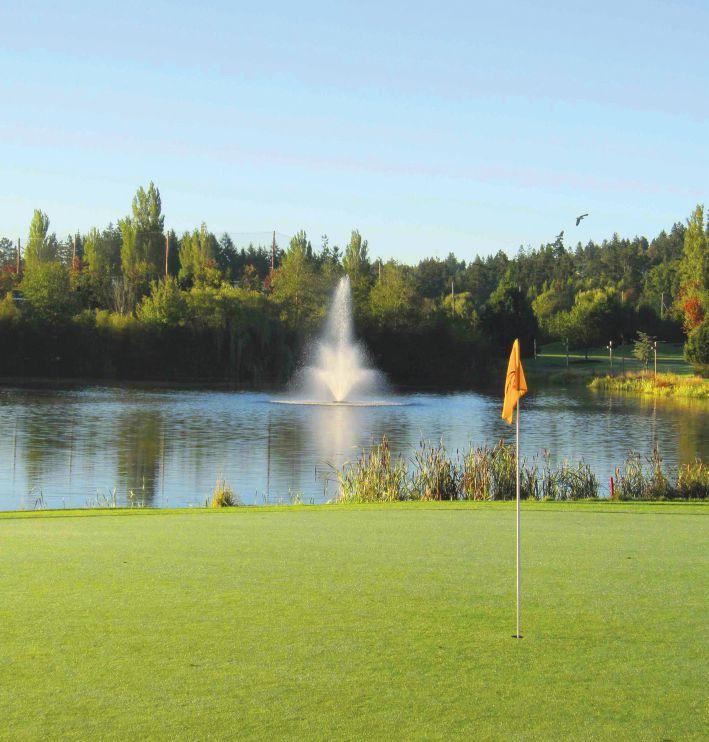
want a feature that you can use to awe clients with for booking tournaments? Do you need a spot where wedding parties can take stunning pictures? How about a hole that can challenge members and guests so that they keep coming back? Focusing on a single area at a time and then moving on to the next will not only keep the budget reasonable but will allow
you to master this new set of management tools before overwhelming yourself and your team.
Getting expert advice
Once you have a decided on where to start, the next step will be to contact a few pond experts to get advice and quotes on the project. This would include discuss -
The pond on the 17th hole at the Cordova Bay Golf Course in Victoria, B.C. adds visual appeal to the property.
Julia Webber is president of Elmira, Ont.-based Fish Farm Supply
which has been serving the lake
ing with them which products would move you towards your goal and how each of them interacts. I would suggest following guidelines for gathering information so that you get a full picture of the project, budget and timeline.
First, if you are inquiring about equipment (fountains, aeration systems, etc.) inquire not only about the warranty but also about service frequency and cost. This expense can vary greatly between brands and types of equipment that may perform similarly. Also, make sure you inquire about who can do the maintenance. Is this something your shop can handle or is it something that needs to be sent out? If you will need to send in the unit, inquire where the repairs will be done. Parts availability, and if the unit needs to be sent away, will affect down times which for a feature item like a
fountain could lead to unhappy clients. Secondly, you will want to know the timeline that will be involved before you see the full results. For some equipment this might be right away, but for some probiotics this might be a much longer timeline such as two to three seasons. Also inquire if there would be support throughout the timeline to refine your approach and move to better products as they become available. Knowing the timeline will not only manage the expectations of your team but will also allow you to budget for the full program.
Thirdly, for any additives, such as probiotics or pond dye, inquire what the cost is for a full season, not just an initial dose or a container. By providing the size of the pond or its location so it can be measured on satellite view, a reputable pond expert should be able to work this out for you.
They may provide a dosage range depending on nutrient content or other factors in the pond and they should also be able to discuss what each of these dosage rates will accomplish and on what timeline.
By contacting an expert, you can benefit from their experience and knowledge. This will save you money as you will be able to take a focused approach while using tried and true products designed to move you towards your specific goals. I always encourage anyone to contact multiple companies for quotes when researching a project as every discussion should help you build your knowledge and lend a new perspective.
I hope this article will be a good starting point when considering how to make your water features work for you and become more attractive to your clients!
When productivity matters, choose




Leadership can take many forms
Trust and teaching are the foundation of leadership, but there are several styles of leadership.
By Mike Jiggens
Leadership is the foundation for operating a successful company, the CEO of a Toronto-based landscaping company said in January at Landscape Ontario’s Congress trade show and conference in Toronto.
Peter Guinane, who co-founded Oriole Landscaping in 1986, said leadership is the key to being able to operate a business efficiently and being freed up to tackle other tasks.
“Leadership is about trust and teaching,” he said, adding there are several forms or styles of leadership that can be adopted. “You have to know the right one to have at the right time.”
If a company owner has quality staff who have had the “destination” described clearly to them, they should be able to “drive the truck” without the owner managing every
turn. The last thing a leader should be doing is “sitting in the truck with the driver” and telling him where to turn and when to speed up or slow down, Guinane said.
“Managing your staff like that will drive them crazy and they will quit.”
As a business grows, its style of leadership may change along the way. Leadership involves setting a direction and creating an inspiring vision, Guinane said, adding the means to communicate effectively is vital and is mostly about listening. Effectively communicating with staff enables employees to share the same journey the leader wishes to take.
“What leadership is not is about being the boss.”
Micromanaging is an ineffective style of leadership in the long run, Guinane said, adding effective leadership involves practice and forming good habits. A company
owner may not excel at a particular skill, but it can be developed with practice, especially when communicating with those who have that skill.
“Having an open mind is perhaps one of the most important steps in your business journey,” he said, noting it’s equally important to be around others whose minds are open. “If I want my staff to be open minded, I also have to be open-minded.”
Guinane said he has had staff come on board who are scared to make suggestions, fearing they’ll either be perceived as insubordinate or lacking intelligence. He emphasized the importance of creating a culture where discussions or the sharing of ideas is free.
“The easiest way to establish that culture is to ask for suggestions and to act on those suggestions.”
A coach, as opposed to a boss, is there to
Leadership involves setting a direction and creating an inspiring vision for a company’s employees.
encourage, he said. A company might have a good “driver,” but he can be coached to “use his brakes more efficiently” or to find ways for the life of his “tires” to be extended.
“Coaches are there to answer questions. They are there to make sure we maintain our target on the final destination of vision you have for the company.”
Styles of leadership
Guinane outlined 12 different styles –or skills – of leadership, outlining their pros and cons.
Visionary: The visionary leader is one who can see the “destination.” Guinane said staff should be able to understand the leader’s vision and be able to communicate it with others.
“Visionary is a very specific skill that has a specific application at the right time and the right place. Your vision should be part of your public brand – where you want your company to be.”
Democratic: Every decision a company makes cannot be put to a vote, Guinane said, suggesting that would make it counterproductive. He noted it’s difficult to run a business when always asking for opinions and having to change direction.
“But there are times when the input from your staff is going to be helpful.”
Such decisions would include the best time for a crew to take a coffee break. It would be a democratic decision made by the team.
“A democratic leader is respectful in that way.”
The democratic style of leadership, however, isn’t effective in all situations, Guinane said.
Transactional: The transactional leader is someone who won’t do anything for someone else unless they get something for it, he said.
“I need you to do this and I’m paying you for it.”
Transactional leaders have removed a level of trust that they’ll do something for someone yet not expect anything in return.
“Your staff won’t do anything for you unless you give them something in return. This is the lesson you’re teaching them.”
Guinane said there are times when the transactional style of leadership might be appropriate, but he warned it shouldn’t form the basis of one’s leadership style.
“You want to base your leadership on trust.”
Charismatic: Charismatic leaders are inspiring, Guinane said, and the style of leadership is particularly effective when there is substance behind the vision. He said the reason these types of leaders are successful is because they can project a vision. Charismatic leadership can be effective and have potential, but there must be substance behind it. A job might be sold, but if it can’t be followed through on the construction side, it could lead to a short-lived company.
Coach: The coaching style of leadership might be the most familiar, Guinane said. A coach is someone who guides and corrects others and is there to support them. He stays in the

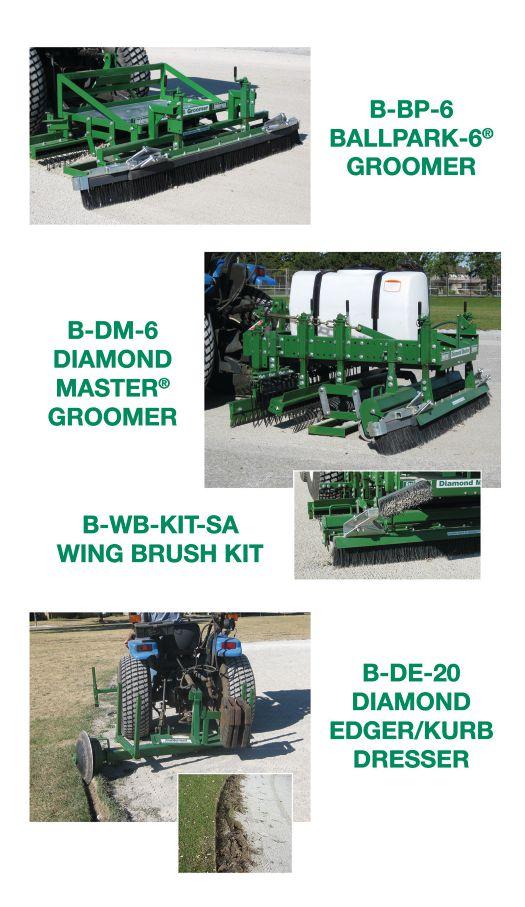
background while supporting his team and is much like a kindergarten teacher who refrains from yelling at her students or forcing them to do things in a certain way.
“It’s about encouraging you to express your creativity, to learn how to act in a certain way, to learn new skills…”
The coach encourages his charges to go the next level.
“If you’re not that teacher in your company, you have to find that person in your company that is. You can’t run a company without somebody who’s mentoring, teaching and coaching. You need to have that personality somewhere in your company.”
Guinane admitted he’s not the teacher within his company, but said there is someone at Oriole Landscaping who is much more adept at teaching, guiding and cultivating those coaching skills.
Servant: Guinane said the servant style of leadership is the one he practises at Oriole, noting it’s perhaps the most popular form of leadership. He said his role as CEO is to ensure his managers have what they need to do their job.
“My job is to support my leadership team. Their job is to support the crew leaders and the operations of the company. The crew leaders’ job is to make sure that the workforce has what they need,” such as skills, materials, knowledge and information.
Servant leaders empower others, he said.
“Having multiple leadership skills is an asset,” Guinane said, adding it’s especially true when the leader has a small company without “a deep bench.”
Bureaucratic: A bureaucratic type of leader is effective in such areas as health and safety, bookkeeping and human resources. Guinane said he’s not suited for such functions but has a staff member who is well qualified. It’s a style of leadership that may not be ideal for every situation, he said, but there are components associated with it that are beneficial to a company.

Commanding: Most of the time, a commanding style of leadership is ineffective, Guinane said. If someone is doing something that could pose an imminent risk of an accident or damage, “you have to stop it immediately, you have to raise your voice and command instructions.”
He warned, however, that leading this way repeatedly will result in the loss of staff. The need to command doesn’t present itself often, he said, but must be done when necessary.
Pacesetting: If the leader sets a pace and the team can’t keep up, it often transforms into commander mode, Guinane said, but it’s meant as a team improvement tactic.
Transformational: A transformational style of leadership can be an ideal skill to have sometimes, he said. If an owner is always transforming his business into something new or is creating a new division within his company, “you’re going to leave your staff dizzy if you don’t stick to your vision.”
Occasionally, the owner may have to erase his vision and start over or may have employees who don’t have the company’s best interests at heart, prompting the need to “clean house. You’re not going to lead that misfit crew of underperformers.”
Guinane said a transformational style of leadership may be good for a short while.
Laissez faire: This form of leadership gives a sense of autonomy to team members
who can make decisions on their own. Owners who buy into a laissez fair style of leadership are mainly concerned that their business turns a profit. Guinane warned, though, that most companies can’t afford to be laissez faire.
Autocratic: The autocratic leader is the opposite of one who’s style is laissez faire. He wants to be able to control everything, and feels if he loses control, he loses power. Guinane said the autocratic leader figures the only way he can run a business is to have complete control over everything.
The form of leadership a business owner chooses may be contingent on where his company’s growth is positioned. One type of leadership may be preferred over another when a company is starting out and may change as the company grows. Guinane said the laissez faire style of leadership is apt to be the worst skill set to have when starting out, but it could be the best option if the company becomes massive.
“All of those different leadership skills are appropriate at different points of that trek.”
The business owner must be able to identify his strengths and weaknesses, he said.
“You have to know what you’re good at. You have to know what you’re not good at. If you’re not good at it, you have to fake it until you learn how to do it or you get someone to help you with it.”
There are many styles of leadership, but at its core must be trust and teaching.


PREMIUM SPRING SOLUTIONS
Nutri DG’s patented delivery system has been providing uncompromised performance and reliability for your most valued turfgrass for years. CastAway™ DG continues our legacy of innovation, representing another technology-centric solution designed to take your turfgrass program to the next level.





natural fertilizer featuring high protein content and nutrients derived from tea seed meal. Dispersing Granule (DG) Technology simplifies application and more rapidly moves the product

Smart advice to start spring season on solid footing
Tips to turn spring maintenance into a competitive advantage
By Ben Slute
Equipment downtime is the bane of any landscaping business. With short Canadian summers offering small windows of time to complete large amounts of work, business owners of all sizes simply can’t afford to have a machine down.
From project delays and idle employees to lost contracts and negative customer experiences, the cost of equipment downtime adds up throughout the season, creating mounting stress levels for everyone involved.
To ensure you’re not starting the year’s busiest season on your back foot, keep in mind these smart maintenance tips to ensure you hit the ground running this spring:
Spring maintenance starts the previous fall
The best way to set your landscaping business up for spring success is to perform end-of-season maintenance on your lawn and turf care equipment before storing it for the dormant winter months.
With zero-turn mowers especially, you should be completing a deep clean of the engine bay and the radiator with compressed air to blow all the dry grass and dust away – otherwise, your machine may have become a hospitable environment for mice with far too many places to hide. Additionally, the underside of a mower deck is an area where rust can build if not cleaned properly since grass buildup can hold moisture.
Fall is also the ideal time to grease bearings and bushings, sharpen blades, check and change the oil and oil filters for the engine and transmission, along with the air filtration system, and be on the lookout for any components that need replacing, as spring is not the time to be making major repairs. By completing a full mechanical check in the fall, you can make any necessary repairs over the winter, so your equipment is ready when the weather lifts.
Transition your machines from winter to spring

Taking care of your lawn and turf care equipment in the fall will leave you with extra time in the spring to perform maintenance on the machines you had running throughout the winter. If your landscaping business was leveraging a machine for snow removal, you’ll want to give it a good wash, or maybe two, to get all the salt off. The brine sprayed on Canadian roads in the winter is extremely corrosive – especially if it sits for any length of time – and will start eating away at your machines as the air warms up.
You’ll also want to ensure your air filter wasn’t damaged by snow or moisture. If snow or snow dust made its way into the filter, it can clog or damage the primary filter element. Should the filter get wet, and you continue using it, the moisture can degrade the filter material over time, potentially leading to more serious engine issues.
Put the final touches on your equipment
Taking care of your lawn and turf care equipment in the fall will leave you with extra time in the spring to perform maintenance on the machines you had running throughout the winter.
Even if you cleaned your equipment in the fall, completed maintenance checks and performed any necessary repairs before storing it for the winter, there’s still more to do. Since cold weather can be harsh on batteries, it’s smart to load test them in the spring to ensure your machines start reliably in the season ahead.
A machine walkaround is also recommended. Check under the hood and around the engine for rodents and place clean cardboard under the machine to help identify any potential fluid leaks. Make sure there are no cuts, bulges or damage to your air or coolant hoses. Mice have also been known to damage wiring harnesses, regardless of the equipment you operate, so inspect those as well.
Starting the season with fresh fuel is essential to proper engine function. Over time, fuel degrades and can damage your carburetor or fuel injection system, especially if it contains ethanol. Fuel stabilizer can prevent breakdown if added before storage, but it won’t fix bad fuel. If the fuel smells sour or appears darker, it’s likely spoiled and should be replaced. Always drain the fuel at the end of the season to avoid issues when starting up.
If you didn’t change the oil in the fall, you’re going to want to do it now. Dirty oil can damage your engine, shorten the engine’s life, and cause future maintenance problems. It’s recommended you
change your oil according to the operator’s manual or once a year, whichever comes first. You’ll also want to check the tire pressure on your machines, as pneumatic tires can lose air over time, and inspect the tread for wear and cracks to keep you tracking straight and mowing evenly.
Get an expert second look
While sticking to a strict maintenance schedule, as per the owner’s manual, will help you avoid most equipment issues, it never hurts to have a professional peek under the hood.
Mechanics who work on these machines every day have a trained eye and know where to look. For instance, they know what a bad bearing feels like in the mower deck or can tell that a bolt is loose from seeing a bit of rust behind it. They’re going to spot those small issues that often become much bigger ones, and as a result, save you a lot of time and money in the long run.
If you run a smaller or mid-size landscaping company that doesn’t have a professional mechanic on staff, contact your local dealer and get a technician sent over to inspect your machines. They’ll, of course, change the oil and filters and sharpen the blades, if needed, but they’ll also be able to see potential problems before they happen.
24_014631_Turf_n_Rec_MAR_CN Mod: January 24, 2025 9:32 AM Print: 01/27/25 page 1 v2.5



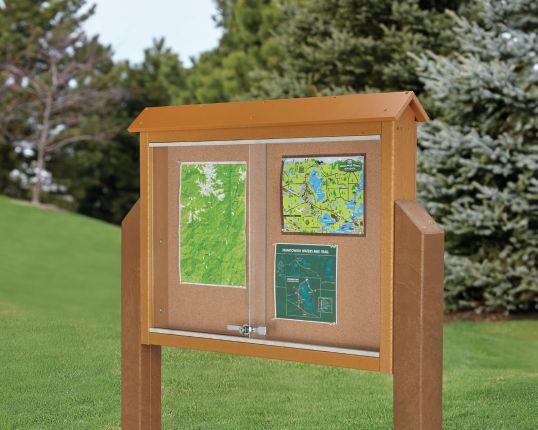
TILT TRUCKS GLOVES
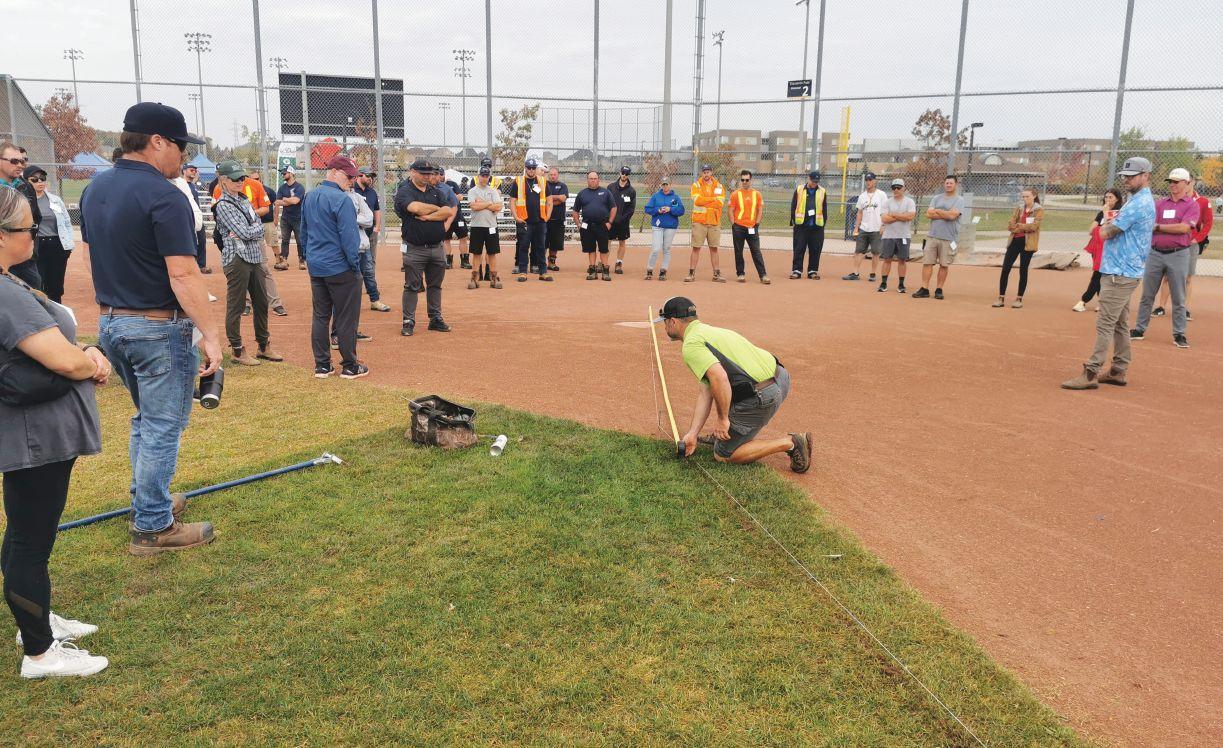
OTS 2024: What you may have missed
A summary of three key education sessions presented at last year’s Ontario Turfgrass Symposium
By Dr. Sara Stricker
This is another look back at the 2024 Ontario Turfgrass Symposium, held at the University of Guelph, highlighting three of the conference education sessions. A new initiative was launched last year in which a concise summary document was created to enable a more effective knowledge transfer. Each presentation has been summed up into about 500 words.
Supported by the Ontario Agri-Food Innovation Alliance KTT Funding Program: Getting Science Off the Shelf, this effort aims to broaden access to critical insights – especially for those who couldn’t attend in person
Below are summaries of three key presentations, with the full document available at www.TurfSymposium.ca.
Better, safer ball: The Tip O’Neill reconstruction project, by Trevor Warner
The renovation of Tip O’Neill Ball Park in Woodstock was undertaken to improve safety, functionality, and capacity. Over time, the park’s playing conditions had deteriorated, necessitating upgrades to ensure player safety and enhance the overall experience. The renovation aimed to modernize the field, including improvements to the surface, facilities, and amenities such as seating, lighting, and pathways. These updates sought not only to meet current standards
but also to boost community engagement by supporting increased use. This project will help by attracting regional events, reinforcing Woodstock’s commitment to recreational and sports activities.
This park was named after Tip O’Neill to honour his contributions and legacy. James Edward O’Neill, known as “Tip,” was a prominent figure in the Woodstock community known for his significant impact in local sports and his commemoration in the Ontario Sports Hall of Fame. Nicknamed “The Woodstock Wonder,” O’Neill played 10 seasons (1883–1892) for the New York Gothams, the St. Louis Browns, the Cincinnati Reds, and the Chicago Pirates. This renovation serves to remind us of this local baseball player and community hero.
This field was last renovated in 2013 and was due for updates to meet increased user demand. The installation of new shade covers over the benches enhances the experience for players by providing much-needed relief from the sun during games. These shade covers not only improve comfort but also help extend the lifespan of the new benches by protecting them from weather-related wear and tear. The new benches were selected based on feedback from players and coaches, ensuring that their design and features meet the needs and preferences of those who use them most. This thoughtful addition ensures that players can enjoy the game in greater comfort. The new backstop fence behind home plate combines aesthetic
The City of Woodstock’s Trevor Warner, seen here conducting an outdoor baseball field maintenance workshop at a past Sports Turf Canada field day, spoke in 2024 about renovations to the city’s Tip O’Neill Ball Park.
PHOTO: MIKE JIGGENS
Satellite-Guided Mowing Made Simple
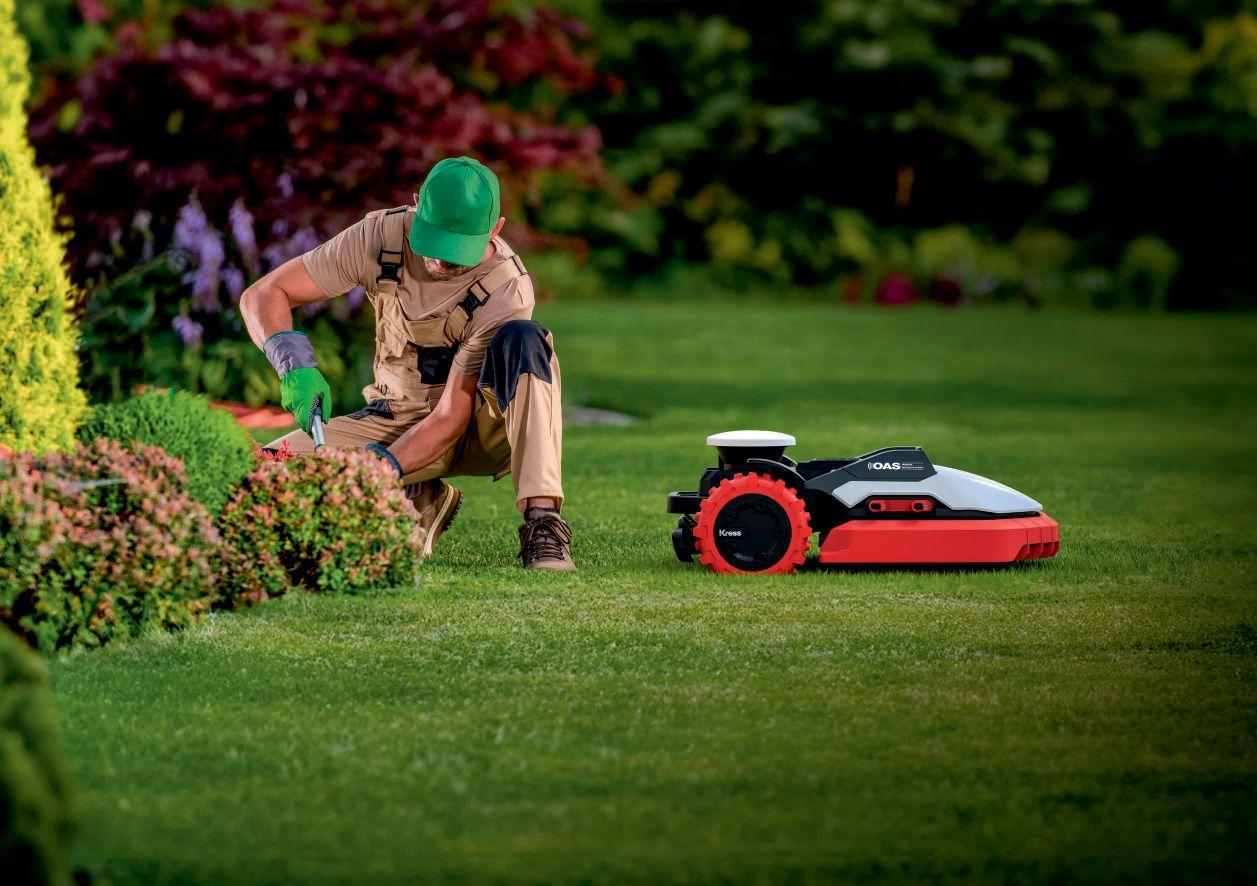
Optimize your green spaces with Kress Mission RTKn robotic mowers.
Using cutting-edge, satellite-guided technology, Kress Mission RTKn autonomous mowers deliver flawless cuts for homes, parks, sports fields, and public spaces—no boundary wires or antennas needed.
Quiet, programmable operation fits mowing within your schedule while saving three hours of mowing time(1) per week, freeing up your team for other maintenance tasks.
With zero operational emissions and reduced labor costs, Kress is revolutionizing lawn care for professionals.
¹”Among Robotic Mower Owners,” My Take, 2023.
The only choice for commercial landscapers to replace gas
FIND YOUR LOCAL DEALER

appeal with enhanced safety, featuring a red brick design on the base, with black poles and fabric netting. This modern upgrade not only visually enhances the field but also improves player and spectator safety by providing effective protection against stray balls. A new practice batting area with artificial turf has been added, providing players with a high-quality space to refine their skills. The renovation also included the installation of new lights around the baseball field, enhancing visibility and allowing for extended playtime. These improvements are designed to meet the dual goals of increasing the park’s usage and ensuring it can host both local and regional sports events.
The turfgrass installation required a germination cover, which facilitated healthy growth. Once the turf was established, the grounds team tidied up the edges, resulting in a neatly finished area. The new stands feature a well-leveled concrete base and include a wheelchair-accessible viewing area, significantly enhancing both safety and accessibility for the audience. The local team was pleased with the results, and we look forward to many years of baseball on this new turf.
Trevor Warner has been managing the sports turf and field conditions for the City of Woodstock since 2014.
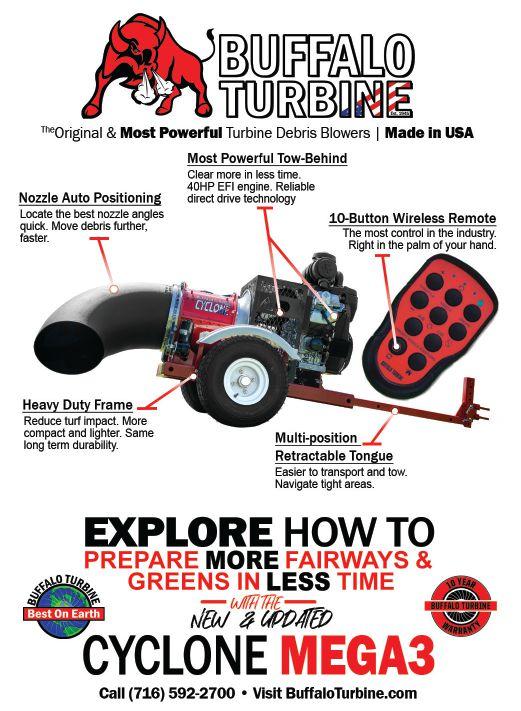
Utilizing best management practices to drive sustainability at your facility and advocate for golf’s future, by Kevin Doyle and Al Schwemler
Golf course superintendents in Ontario are committed to protecting both the environment and their local communities. Their role involves adhering to numerous regulatory requirements, which create a framework that superintendents must follow to ensure environmental compliance and sustainability. To aid these efforts, the Ontario Golf Superintendents’ Association (OGSA) and the Golf Course Superintendents Association of America (GCSAA), in partnership with the United States Golf Association (USGA), created the Best Management Practices (BMP) for Ontario Golf Courses. This comprehensive document was developed by experts and vetted by peer superintendents, OGSA associate members, and the Toronto and Region Conservation Authority.
The BMP document includes a planning guide and template, which can serve as a blueprint for golf courses across Ontario to integrate these practices into their operations. The topics covered include planning and construction, irrigation, nutrient management, integrated pest management, and more. It integrates current regulations regarding integrated pest management and water-taking, providing superintendents with essential regulatory information and industry expert-recommended best practices to enhance their environmental efforts. Furthermore, the BMP underscores the need for improved communication of golf’s positive environmental impact amid rapidly changing regulations. The BMP document helps superintendents effectively convey this commitment to environmental stewardship.
When it comes to sustainability, we must consider people, planet, and profit. The main drivers for adopting BMPs are professional commitment, community partnerships, cost savings, and growth of the game, alongside risk management and enhanced environmental protection. This guide acts as both an educational tool and a practical resource, aimed at golf course superintendents, owners, legislators, regulators, and community stakeholders. It includes actionable information on current environmental practices and suggestions for possible alterations to enhance sustainability. The ultimate goal of a golf course should be to ensure a safe environment for staff, golfers, community, and the environment.
By adopting and implementing these practices, golf facilities not only comply with existing regulations but also contribute positively to their communities and the environment. Golf courses are encouraged to assess their current practices, plan for immediate and future improvements, and embrace BMPs as a fundamental part of their operational strategy. This proactive approach is presented as essential for the long-term sustainability of the golf industry and the preservation of the natural environments these courses inhabit. This BMP document is available on the OGSA website, and the GCSAA has created an online tool for members to create their own facility-specific BMP plan of action. By adopting BMPs, Ontario golf course superintendents can continue to be
champions of environmental stewardship, benefiting their communities, the environment, and the golf industry as a whole.
Kevin Doyle is northeast regional representative of the Golf Course Superintendents Association of America. Al Schwemler is a retired golf course superintendent and a past president of the Ontario Golf Superintendents Association.
Navigating tenders and contracts with impossible standards, by Al Pinsonneault
Landscaping and snow plowing service providers often face challenges when dealing with contracts that require unrealistic standards. The presentation included various aspects of the industry, which often feature unrealistic expectations around service delivery times and quality standards. These challenges are exacerbated by unpredictable weather conditions and the physical limitations of equipment and labour. How can you bridge the gap between customer expectations and the practical realities of snow and turf management?
When it comes to snow plowing contracts, a significant emphasis is placed on the issues of insurance and liability. Commercial properties especially face increased risks associated with snow removal,
including property damage and potential injuries. This often-unreasonable burden is placed on service providers to manage these risks without adequate support or fair compensation. It is important to have comprehensive insurance coverage and to negotiate contract terms to equitably distribute liability. A formal contract should include legal counsel in drafting, reviewing, and negotiating terms to protect service providers’ interests. A solid contract will include dispute resolution mechanisms and clauses that allow for flexibility and protection for service providers. For example: “If the contractor defaults in its obligations, the Manager shall give notice to the contractors, whereupon the Contract shall have two business days to correct such breach. If the breach is not corrected within the two-day period, this agreement may be terminated.”
When integrating landscaping and snow removal services into a single contract, expectations should be outlined to manage the seasonal transition between services and ensure clear definitions of work scope, performance metrics, and payment terms.
Al Pinsonneault established Al’s Lawn and Garden in 1981 and has served as president of the Professional Lawn Care Association of Ontario.
Dr. Sara Stricker is the communications and outreach co-ordinator at the Guelph Turfgrass Institute.
THE ENVIRONMENTAL STEWARDSHIP TOOLKIT


This highly practical guide covers the full complement of tools green industry professionals need to create a successful environmental program on golf courses and grounds. TheEnvironmentalStewardshipToolkit offers a comprehensive analysis of all relevant issues, including environmental management, resource management, community engagement, and document management.
The emphasis throughout is on the development of programs that are both sustainable and practical, combining the protection and renewal of environmental systems with a workable business plan. Regulatory issues as well as concerns of owners, customers, and the community at large are also addressed.

Health
& Safety
By CCOHS
The Canadian Centre for Occupational Health and Safety (CCOHS) promotes the total well being of workers in Canada by providing information, training, education, systems and solutions that support health and safety programs and injury and illness prevention. www.ccohs.ca
The ergonomics of winter maintenance
Winter maintenance work can be hard on the body. Cold temperatures, slippery surfaces, and physically demanding tasks such as shovelling, salting, and operating snow removal equipment can all contribute to musculoskeletal injuries. Incorporate these good ergonomic practices to reduce strain, improve efficiency, and minimize the risk of injuries during winter operations.
Fuel up, warm up, and dress right
Strenuous activities require adequate preparation and working in cold environments is no different. Cold muscles are more vulnerable to strain, so it’s important to layer insulated yet breathable clothing that provides warmth and allows you to move freely. Choose warm gloves that have good grip strength and dexterity. Ensuring proper footwear with adequate traction can help prevent slips and falls, which are a common hazard in icy conditions.
Don’t forget about the role that hydration and proper nutrition play in injury prevention, especially in winter. Dehydration can contribute to muscle cramps and fatigue, increasing the risk of ergonomic injuries. Warming up with stretches and light movement before starting a strenuous task can reduce the risk of strains and sprains.
Know the basics of safe shovelling
Shovelling is one of the most physically taxing winter tasks, often leading to back, shoulder, and wrist injuries, so be sure to use the appropriate tools with proper technique. An ergonomically designed shovel made of lightweight materials may reduce strain on the lower back. Pushing snow instead of lifting it minimizes exertion while bending at the knees rather than the waist helps maintain a neutral spine position. Take frequent breaks and alternate tasks to reduce fatigue and prevent overuse injuries,

and avoid twisting your torso when throwing snow, as this motion can place excessive stress on your spine. Instead, turn your entire body with the movement to help maintain proper alignment and reduce strain.
Understand body mechanics
Operating snow blowers and salt spreaders requires attention to posture and body mechanics. Snow blowers should be adjusted to an appropriate handle height to prevent excessive bending or reaching. As with shovelling, pushing rather than pulling these machines can help reduce strain on the shoulders and lower back.
Take periodic breaks when using powered equipment for extended periods to reduce exposure, as vibrations from the equipment can contribute to hand-arm vibration syndrome. Anyone who works with these machines should be trained on proper use and how to recognize early signs of vibration-related injuries, such as tingling or numbness in the hands, so they can take the necessary precautions to prevent long-term damage. Like any personal protective equipment, there should be less dependence on gloves in favour of more effective control measures.
Ergonomics are also important to consider when handling heavy materials, such as salt bags, which require proper lifting technique to avoid lower back injuries. Storing materials at waist height helps re-
duce the need for excessive bending. When lifting, engage the legs and keep loads close to the body to minimize strain on the spine. Whenever possible, use mechanical aids such as carts or dollies to reduce physical exertion and improve efficiency. For heavier loads, use team lifting techniques to ensure that no one person is overexerting themselves.
Don’t let maintenance slide
Preventative maintenance of tools and equipment is an essential component of good winter ergonomics. Dull shovel blades, improperly lubricated snow blowers, and worn-out grips can all increase the effort required to complete tasks, leading to unnecessary strain. Conduct regular inspections and maintenance to make sure that equipment continues to operate efficiently, reducing physical stress on workers. Keep pathways clear of obstacles and ice buildup to minimize the risk of slips and falls that often result in musculoskeletal injuries during winter months.
Provide ongoing education, training
Encouraging a culture of safety through training and awareness is one of the most effective ways to help prevent ergonomic injuries. Educate workers on proper techniques and how to recognize early signs of strain or discomfort. Encourage them to report concerns at the earliest opportunity, and to take short breaks throughout their shifts to prevent fatigue, which can compromise posture and movement.
Beyond individual techniques, employers and managers can take proactive steps to enhance safety. Investing in the right ergonomic tools, such as snow pushers with extended handles, motorized spreaders, and heated gloves, can significantly reduce strain and improve worker comfort.
In an industry where physical demands are high, implementing ergonomic principles into your winter operations can help ensure workers’ long-term well-being.
Shovelling snow is one of the most taxing winter tasks and can lead to back, shoulder and wrist injuries.


With the new WiseNav update, say goodbye to boundary wire limitations. This update will take your robot's precision to the next level. Now, navigate without the need for a boundary wire, providing three times more mowing capacity and significantly reducing your workload. This update is also applicable to golf ball pickers.
Exclusively available for GPS-RTK robot models.

PATTERN MOWING & PICKING
With centimeter accuracy
FULLY AUTONOMOUS
Charges, Cuts & Dispenses golf balls on its own
COMBINES WITH TM-2050
MULTI-ZONE OPERATION
Use on sport fields, parks and golf courses
SUSTAINABILITY AND RELIABILITY
Zero emissions with zero noise pollution
For a complete autonomous solution for your driving range
SMARTER TECHNOLOGY. WITH TRUSTED OUTDOOR POWER.



The ECHO X Series is a collection of best-in-class tools, engineered for professionals to conquer the toughest jobs e ortlessly. This powerful lineup of battery-powered equipment maximizes productivity and e ciency, ensuring peak performance on every task. Backed by a two-year commercial warranty, you can trust in their superior quality and reliability.
